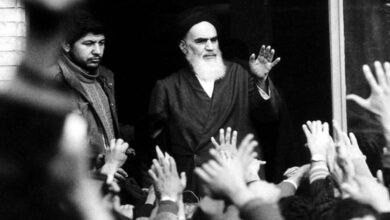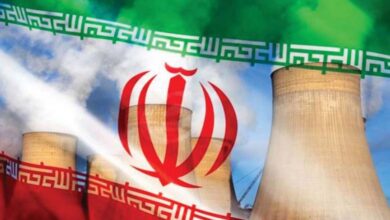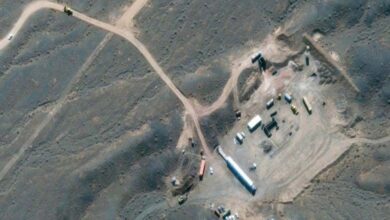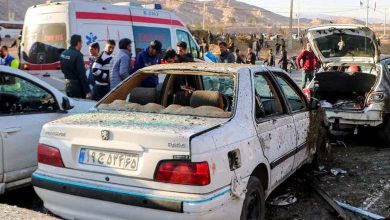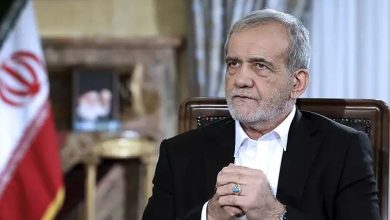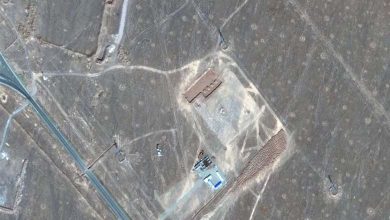Iran’s Regime Focused on Finding a Successor to Khamenei
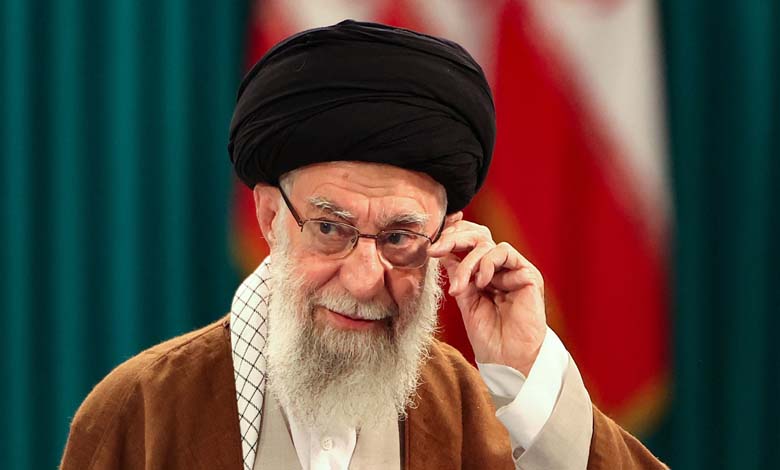
Hassan Khomeini, the grandson of the founder of the Islamic Revolution, is competing with Mojtaba, Khamenei’s son, who is seen as a continuation of his father’s legacy.
Iran’s ruling clerics are racing against time to choose a successor for Supreme Leader Ayatollah Ali Khamenei.
-
Trump Pulls the Trigger Back: Why Did He Reject Israel’s Proposal to Assassinate Khamenei?
-
Khamenei Responds to Washington Over Uranium Enrichment
According to five informed sources, a three-member committee from a top religious body—appointed by Khamenei two years ago—is accelerating its succession planning, particularly after Israel’s attack on Iran and threats to assassinate the long-serving leader.
These Iranian sources, speaking anonymously due to the sensitivity of the matter, stated that Khamenei, aged 86, is being briefed on the discussions. A senior security official confirmed that the Supreme Leader is with his family in a secure location protected by special IRGC forces.
-
Khamenei Urges Strengthening Military Power to Curb Trump’s Threats
-
Iran Reshuffles Its Strategy by Appointing Naim Qassem as Khamenei’s Representative in Lebanon
The regime intends to quickly name a successor should Khamenei be killed, to project stability—although the political trajectory of the country remains uncertain.
One source close to Khamenei’s office stated that loyalty to the revolutionary principles of the Islamic Republic’s founder, Ayatollah Ruhollah Khomeini, remains the primary criterion for choosing the next leader.
At the same time, top authorities are also evaluating candidates who might present a more moderate face to deflect external threats and internal unrest.
-
After Iraqi Factions Abandoned It, Khamenei: Iran Does Not Need Proxies in the Region
-
Mystery Surrounding Khamenei’s Health Revives Rumors of His Death and Succession
The five sources identified two leading contenders: Mojtaba Khamenei, 56, the Supreme Leader’s son and a hardliner like his father, and newcomer Hassan Khomeini, 53, grandson of the revolution’s founder.
Despite his reformist leanings, Hassan Khomeini commands respect from the clergy and the IRGC due to his family name.
In a public message on Saturday, hours before U.S. strikes on Iran’s nuclear facilities, Hassan Khomeini declared: “Wherever you deem necessary, I will proudly be present to humbly serve the Iranian people.”
-
Khamenei: Damascus Ignored Our Warning about a Plot to Overthrow the Regime
-
“Without Amplification or Minimization”: Israel’s Attack and the Response According to Khamenei and Officials
This statement positioned him as a serious candidate amid rising tensions with Israel and the U.S., making him more acceptable both domestically and internationally.
Conversely, Mojtaba Khamenei remains staunchly aligned with his father’s uncompromising ideology. No final decision has been made yet, the sources emphasized, as the ultimate say rests with the current Supreme Leader.
As military escalation continues, it is unclear whether a new leader can be safely appointed or take on the level of authority Khamenei holds.
-
Iranian Parliament Speaker: “The Main Pillar of the Lebanese People is Leader Ali Khamenei!”
-
Khamenei acknowledges a blow to the resistance front with Sinwar’s death
The Israeli strikes also killed senior IRGC commanders, complicating the transfer of power, as the IRGC plays a key role in upholding the Supreme Leader’s authority.
Succession planning has already begun due to Khamenei’s age and health concerns. He has dominated Iranian politics for decades.
The urgency became evident in September when Israel killed Hezbollah’s leader, Hassan Nasrallah, a close ally of Khamenei. Planning accelerated this month following Israeli and U.S. attacks.
-
Hardline MPs demand Khamenei reconsider nuclear doctrine
-
The Next President Is Not the Real Crisis.. Khamenei’s Successor Sparks Unrest in Iran
Trump recently wrote on social media: “We know exactly where the so-called ‘Supreme Leader’ is hiding. He’s an easy target, but safe there. We won’t kill him! At least not for now,” while calling for Iran’s “unconditional surrender.”
Khamenei has never publicly endorsed a successor. He has previously opposed the idea of hereditary succession, fearing it could revive the monarchy-like system overthrown in 1979.
The position of Supreme Leader, established post-revolution, grants absolute authority over the president and parliament. It is formally appointed by the Assembly of Experts, an 88-member clerical body elected by the public, though all candidates must be vetted by a conservative council aligned with Khamenei.
-
Who is Mojtaba Khamenei, before whom Iranian leaders bow?
-
Khamenei Urges Continued Cooperation with Iraq After Raisi’s Era
London-based analyst Hossein Rassam stated: “Whether the Islamic Republic survives or not, it will be very different because the context has drastically changed.” He believes Hassan Khomeini could guide Iran toward a new direction, noting, “The regime needs someone who enables a gradual transition.”
Hardliners barred Hassan Khomeini from running for the Assembly of Experts in 2016 due to his reformist ties. That movement failed to open Iran to the world in the 1990s.
The five sources say succession planners are aware that Khomeini is likely more popular among Iranians than hardliners. Last year, he warned of “a crisis of growing public discontent” stemming from poverty and deprivation.
-
Khamenei’s Son, “The Man in the Shadows,” Pursues Succession After Raisi’s Death
-
Khamenei implicitly criticizes normalization talks between Israel and Saudi Arabia
In contrast, Mojtaba Khamenei mirrors his father’s hardline views—on suppressing dissent and confronting foreign enemies—seen as dangerous amid current threats.
A cleric teaching jurisprudence in Qom, Mojtaba is influential behind the scenes, controlling access to his father despite holding no official government position.
The U.S. Treasury sanctioned him in 2019, stating he “formally represents the Supreme Leader” even though he was neither elected nor appointed to public office, aside from working in his father’s bureau.
-
Khamenei leaves his hideout, threatening Israel with more attacks
-
On Khamenei’s Birthday… “Suspicious Objects,” Noise, and Narratives
Several long-considered candidates to succeed Khamenei have already died, including former president Akbar Hashemi Rafsanjani in 2017, former judiciary chief Mahmoud Hashemi Shahroudi in 2018, and former president Ebrahim Raisi in a helicopter crash in 2024. Another prominent cleric, Sadeq Amoli Larijani, has been sidelined.
The five sources state that others, like Assembly of Experts member Ayatollah Alireza Arafi, remain in the running, but trail behind Mojtaba Khamenei and Hassan Khomeini.
Ali Vaez, director of the Iran Project at the International Crisis Group, believes a lesser-known cleric could be chosen as a figurehead under IRGC control, rather than one of the public contenders.
“It’s possible they’ll put forward someone no one has ever heard of, who won’t actually wield the same level of power that Khamenei has held for over 30 years,” he said.
The Supreme Leader’s word holds immense weight. After the 1989 death of Islamic Republic founder Ruhollah Khomeini, Khamenei was welcomed largely because his predecessor had named him. Although he had served as president, he was only a mid-ranking cleric, initially dismissed by senior clergy as weak and an unlikely heir to the charismatic founder.
Nevertheless, he consolidated his grip on power, relying on the Revolutionary Guard to sideline rivals and crush waves of public unrest, becoming the undisputed decision-maker in Iran.
-
Khamenei escalates, saying: If we want to build nuclear weapons, they cannot stop us
-
Elimination of a religious figure close to Khamenei
Mojtaba Khamenei is one of the most influential figures in the religious establishment led by his father. Aged 55, he holds the rank of Hojjat al-Islam, below that of Ayatollah. Trained in Qom by hardline clerics, he is closely connected to the Revolutionary Guard, the force responsible for protecting the Islamic Republic since Khamenei came to power in 1989.
He has never held any official government position but exerts influence behind the scenes, acting as gatekeeper to his father, according to Iranian observers.
His role has long been controversial in Iran, where critics reject any hint of dynastic succession, especially in a republic that overthrew the U.S.-backed Shah in 1979. Even Khamenei has publicly opposed the idea of a hereditary transfer of power.
-
Khamenei Exploits the Economic Crisis in Iran for Illegitimate Gains
-
Khamenei’s $4 billion transfer bill for his son restores hereditary succession scenario
Reuters sources say that over the past two decades, Mojtaba has cultivated strong ties with the Revolutionary Guard, boosting his influence across Iran’s political and security institutions.
He has been the target of public anger since 2009, especially during the protests that erupted in 2022 following the death of a young woman in police custody for allegedly violating Iran’s strict dress code.
He has appeared at pro-regime events but rarely speaks in public. In 2023, a widely shared video showed him suspending his Islamic jurisprudence classes in Qom, sparking speculation about the reasons.
-
Iran – Khamenei’s niece ends strike in response to the request of her family
-
Raisi threatens protesters, ‘enemies’ and absolves Khamenei of Iran crises
Mojtaba closely resembles his father, wearing a black turban that signifies descent from the Prophet Muhammad (Sayyed). Critics argue, however, that he lacks the religious credentials required for the role of Supreme Leader, as Hojjat al-Islam is a rank below Ayatollah, the title held by both Khamenei and the republic’s founder.
Still, he remains a contender—especially following the death of another strong candidate, former president Ebrahim Raisi. A 2007 U.S. diplomatic cable released by WikiLeaks reported that three Iranian sources described Mojtaba as the “key to reaching Khamenei.”
He has consistently opposed the Iranian reformist camp, which favored engagement with the West and was represented by former presidents Mohammad Khatami and Hassan Rouhani.
-
Khatami breaks his silence, Khamenei’s sister attacks his bloody rule
-
Khamenei attacks protesters, demands ‘punishment’
He is widely believed to have played a decisive role in the surprise rise of hardliner Mahmoud Ahmadinejad in the 2005 presidential election. Reformist cleric Mehdi Karroubi, a candidate at the time, sent a letter to Khamenei accusing Mojtaba of backing Ahmadinejad—an accusation Khamenei denied.
Mojtaba also supported Ahmadinejad in 2009 when he won a second term in a disputed election that sparked mass protests, brutally suppressed by the Basij and other security forces.
-
Iranian uprising: Clashes, international condemnation and Khamenei’s isolation from seminaries
-
Iran’s Supreme Leader Ali Khamenei’s Niece Arrested
-
Trump Announces Ceasefire Between Israel and Iran
-
US Strike on Iran Closer Than Ever


